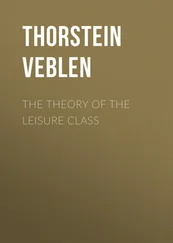With interruptions, more or less serious, from time to time, and with increasing evidence of a penchant for warlike or predatory enterprise on the one hand and of class distinctions on the other hand, much the same story runs on through the ages of bronze and early iron. Evidences of borrowing from outside, mainly the borrowing of decorative technique and technological elements, are scattered through the course of this development from very early times, showing that there was always some intercourse, perhaps constant intercourse, with other peoples more or less distant. So that in time, by the beginning of the bronze age, there is evidence of settled trade relations with peoples as remote as the Mediterranean seaboard.
In many of its details this prehistoric culture shows something of the same facility in the use of mechanical expedients as has come so notably forward again in the late development of the industrial arts of western Europe. It is in its mechanical efficiency that the technology of the latterday Western culture stands out preeminent, and it is similarly its easy command of the mechanical factors with which it deals that chiefly distinguishes the prehistoric technology of North Europe. In other respects the prehistoric material from this region does not argue a high level of civilisation. There are no ornate or stupendous structures; what there is of the kind is mounds and barrows of moderately great size and using only undressed stone where any is used, but making a mechanically effective use of this. There is, indeed, nothing from the stone age in the way of edifices, fabrics or decorative work that is to be classed, in point of excellence in design or execution, with the polished-flint woodworking axe or chisel of that time. From the bronze age at its best there is much excellent bronze work of great merit both in workmanship and in decorative effect; but the artistic merit of this work (from the middle and early half of the bronze age) lies almost wholly in its workmanlike execution and in the freedom and adequacy with which very simple mechanical elements of decoration are employed. It is an art which appeals to the sense of beauty chiefly through the sense of workmanship, shown both in the choice of materials and decorative elements and in the use made of them. When this art aspires to more ambitious decorative effects or to representation of life forms, or indeed to any representation that has not been conventionalised almost past recognition, as it does in the later periods of of the bronze age, the result is that it can be commended for its workmanship alone, and so far as regards artistic effect it is mainly misspent workmanship. 88
The same workmanlike insight and facility comes in evidence in the matter of borrowing, already spoken of. Borrowing goes on throughout this prehistoric culture, and the borrowed elements are assimilated with such despatch and effect as to make them seem home-bred almost from the start.
It is a borrowing of technological elements, which are rarely employed except in full and competent adaptation to the uses to which they are turned; so much so that the archaeologists find it exceptionally difficult to trace the borrowed elements to specific sources, in spite of the great volume and frequency of this borrowing.
There is a further and obscurer aspect to this facile borrowing. In the cultures where the technological and decorative elements are first invented, or acquired at first-hand by slow habituation, there will in the nature of the case come in with them into the scheme of technology or of art more or less, but presumably a good deal, of extraneous or extrinsic by-products of their acquirement, in the way of magical or symbolic efficacy imputed and adhering to them in the habits of thought of their makers and users. Something of this kind has already been set out in some detail as regards the domestication and early use of the crop plants and animals; and the like is currently held to be true, perhaps in a higher degree, for the beginnings of art, both representative and decorative, by the latterday students of that subject; the beginnings of art being held to have been magical and symbolic in the main, so far as regards the prime motives to its inception and its initial principles. 89In the origination and indigenous working-out of any given technological factor, e. g., such as the use of the crop plants or the domestic animals, elements of imputed anthropomorphism are likely to be comprised in the habitual apprehension of the nature of these factors, and so find lodgment in the technological routine that has to do with them; the result being, chiefly, a limitation on their uses and on the ways and means by which they are utilised, together with a margin of lost motion in the way of magical and religious observances presumed to be intrinsic to the due working of such factors. The ritual connected with tillage and cattle-breeding shows this magical side of a home-bred technology perhaps as felicitously as anything; but similar phenomena are by no means infrequent in the mechanic arts, and in the fine arts these principles of symbolism and the like are commonly present in such force as to afford ground for distinguishing one school or epoch of art from another.
Now, when any given technological or decorative element crosses the frontier between one culture and another, in the course of borrowing, it is likely to happen that it will come into the new culture stripped of most or all of its anthropomorphic or spiritual virtues and limitations, more particularly, of course, if the cultural frontier in question is at the same time a linguistic frontier; since the borrowing is likely to be made from motives of workmanlike expediency, and the putative spiritual attributes of the facts involved are not obvious to men who have not been trained to impute them. The chief exception to such a rule would be any borrowing that takes effect on religious grounds, in which case, of course, the magical or symbolic efficacy of the borrowed elements are the substance that is sought in the borrowing. Herein, presumably, lies much of the distinctive character of the north-European prehistoric culture, which was in an eminent degree built up out of borrowed elements, so far as concerns both its technology and its art. And to this free and voluminous borrowing may likewise be due the apparent poverty of this early culture in religious or magical elements.
A further effect follows. The borrowing being (relatively) unencumbered with ritual restrictions and mag-ical exactions attached to their employment, they would fall into the scheme of things as mere matter-of-fact, to be handled with the same freedom and unhindered sagacity with which a workman makes use of his own hands, and could, without reservation, be turned to any use for which they were mechanically suited. Something of symbolism and superstition might, of course, be carried over in the borrowing, and something more would unavoidably be bred into the borrowed elements in the course of their use; but the free start would always count for something in the outcome, both as regards the rate of progress made in the exploitation of the expedients acquired by borrowing and in the character of the technological system at large into which they had been introduced. Both the relative freedom from magical restraint and the growth of home-made anthropomorphic imputations, may easily be detected in the course of this northern culture and in its outcome in modern times. Cattle, for instance, are a borrowed technological fact in the Baltic and North-Sea region, but superstitious practices seem never to have attached to cattle-breeding in that region in such volume and rigorous exaction as may be found nearer the original home of the domesticated species; and yet the volume of folk-lore, mostly of a genial and relatively unobstructive character, that has in later times grown up about the care of cattle in the Scandinavian countries is by no means inconsiderable.
Читать дальше












